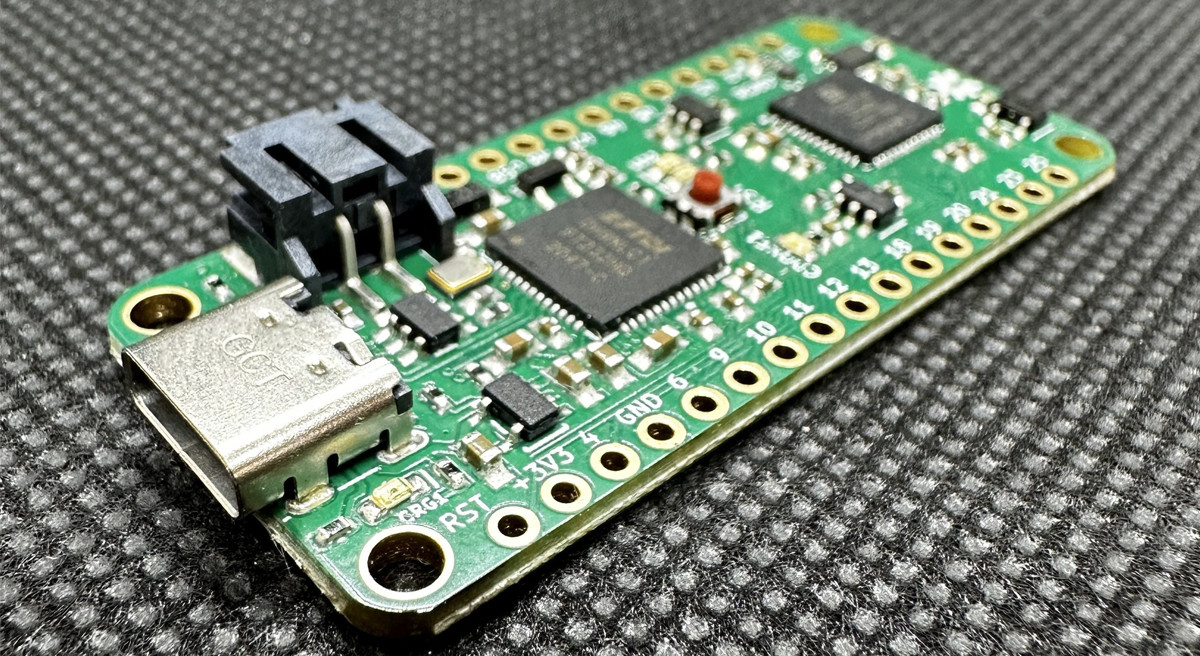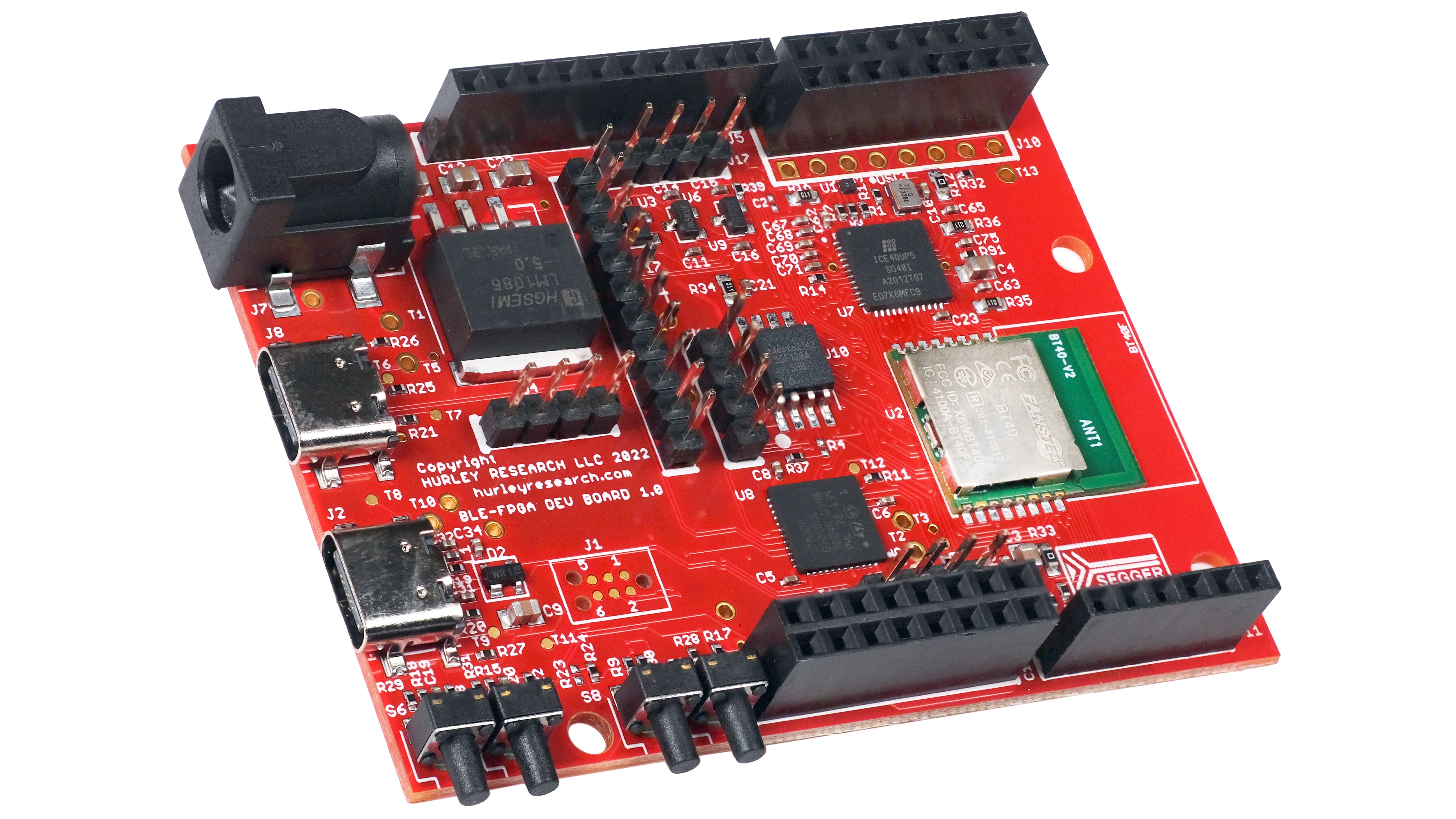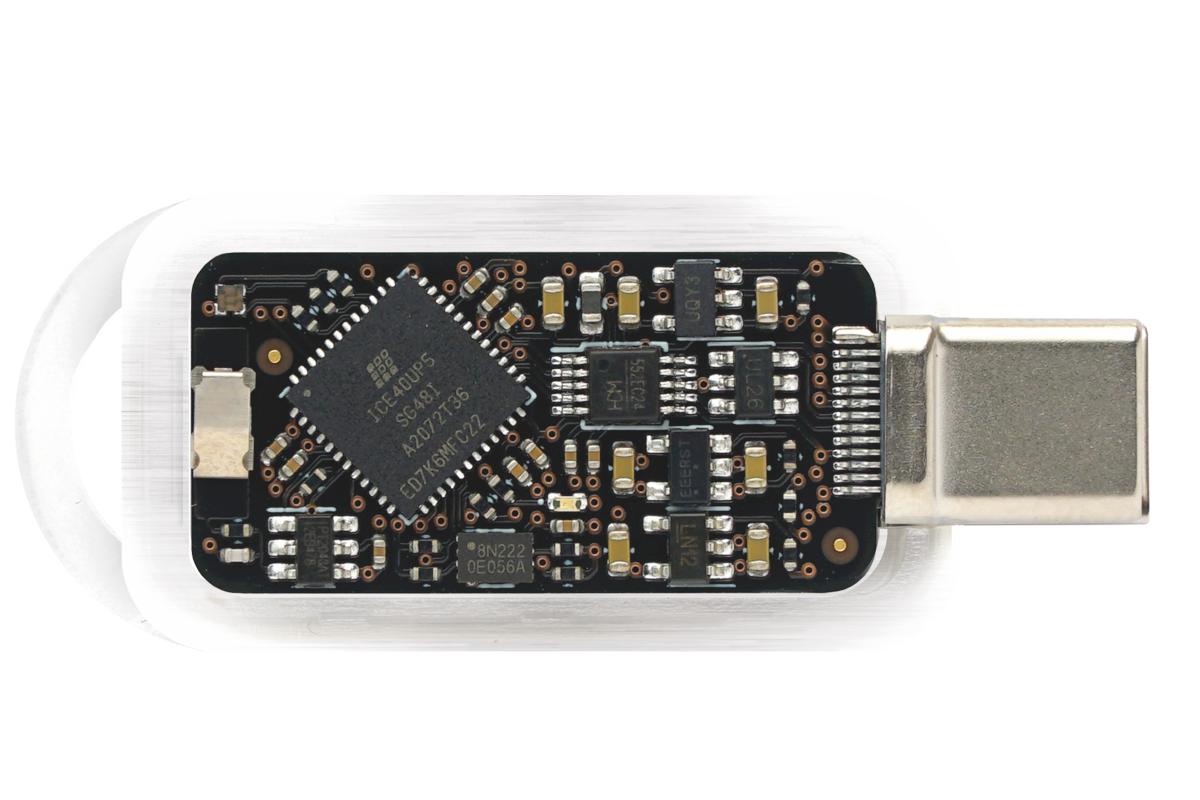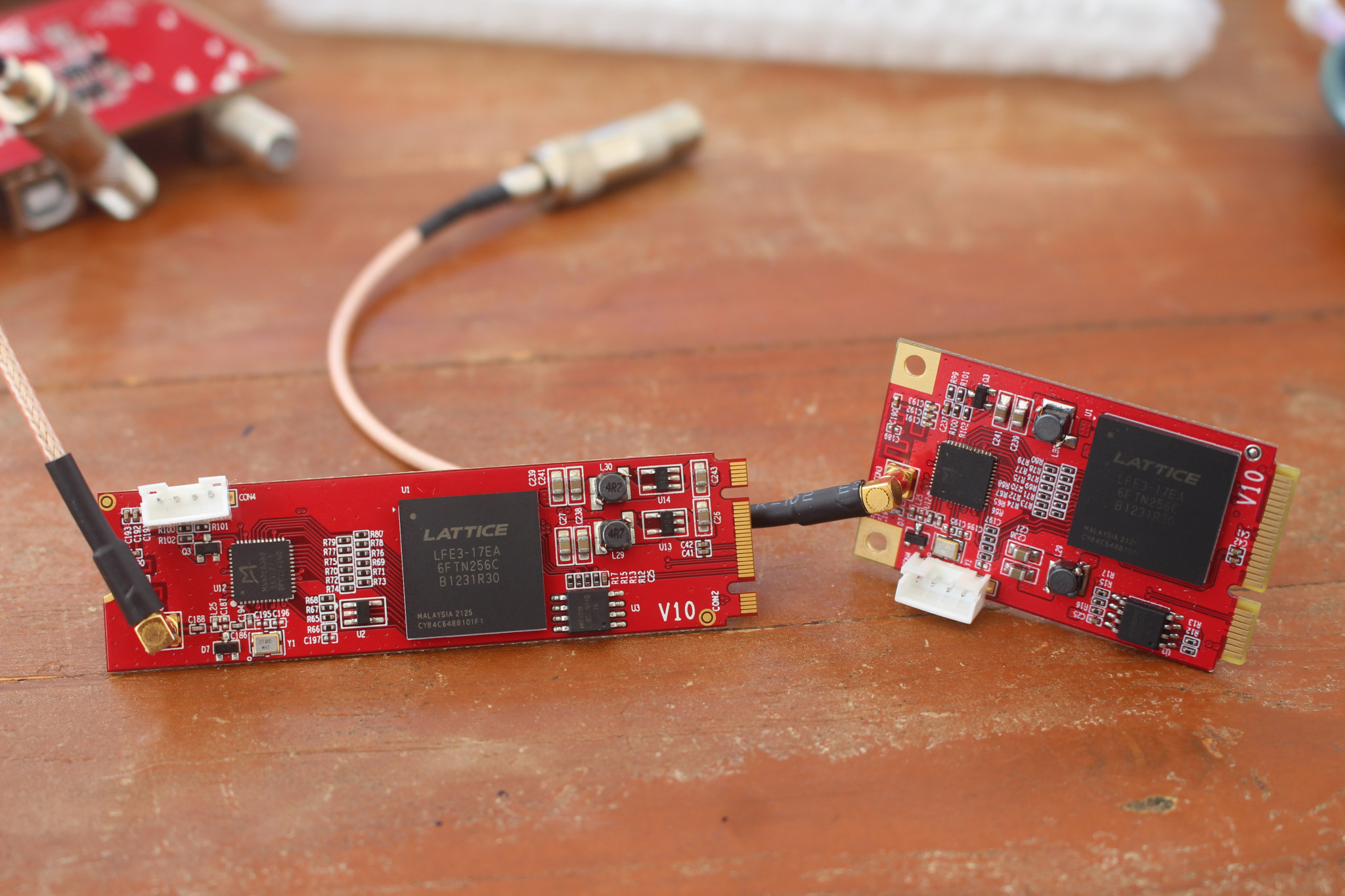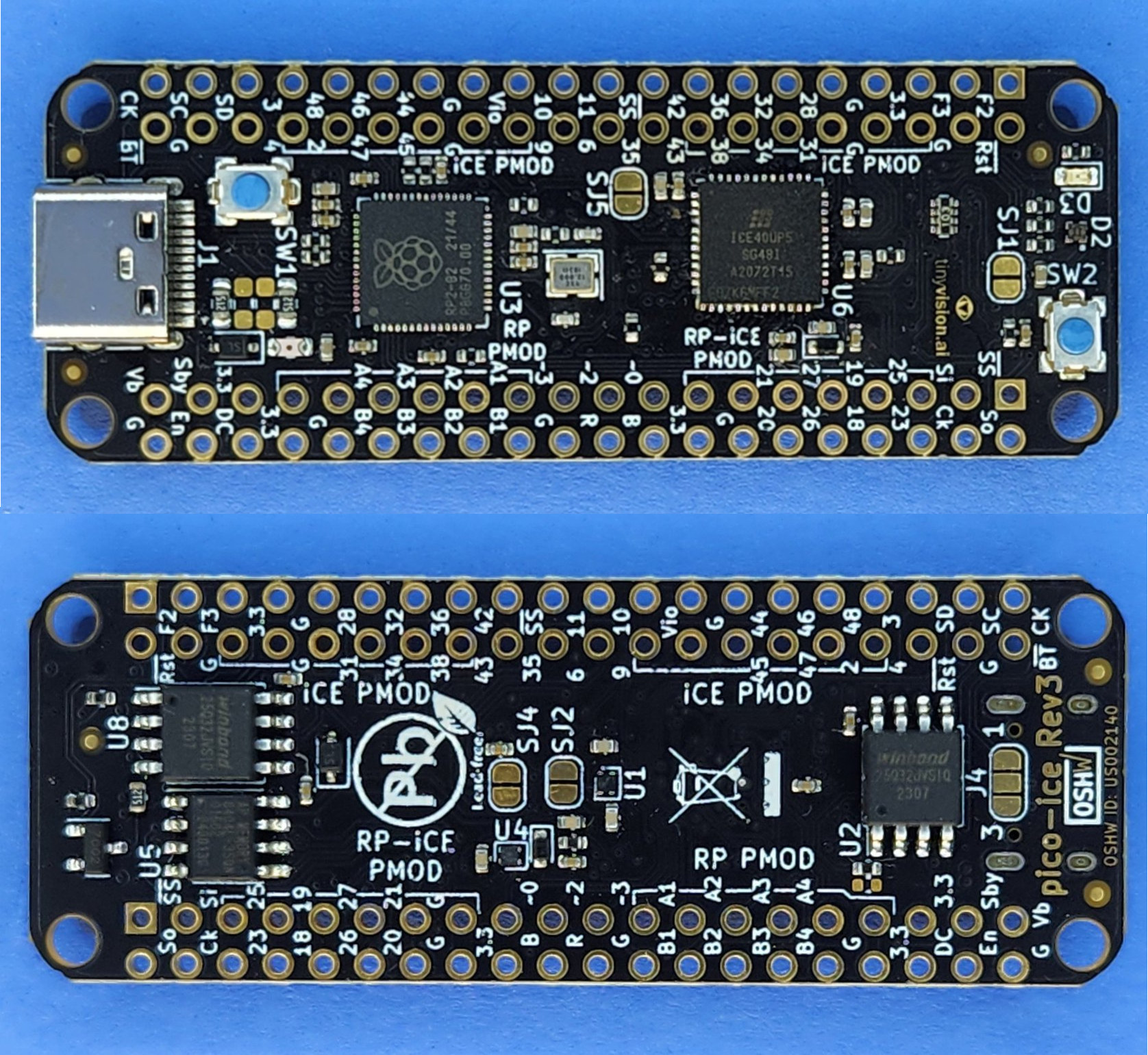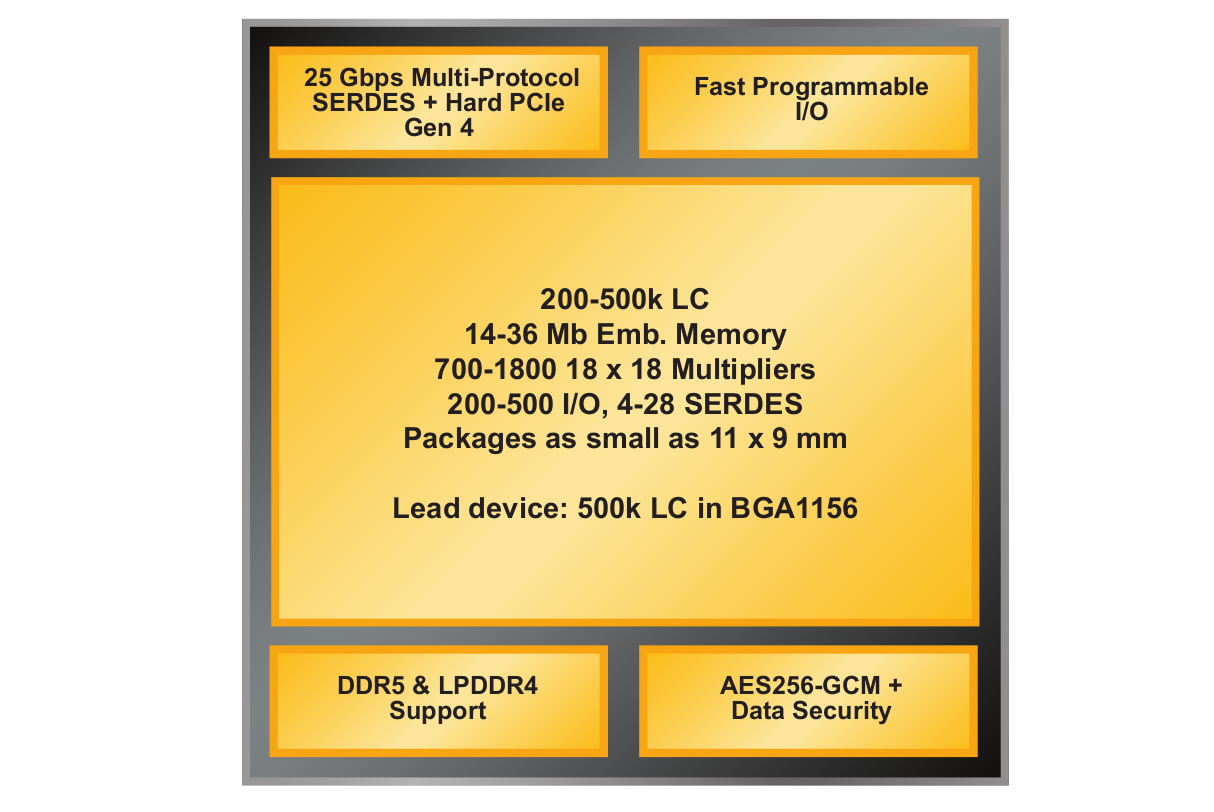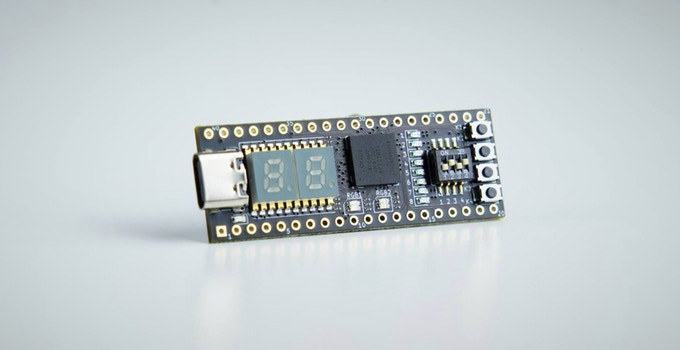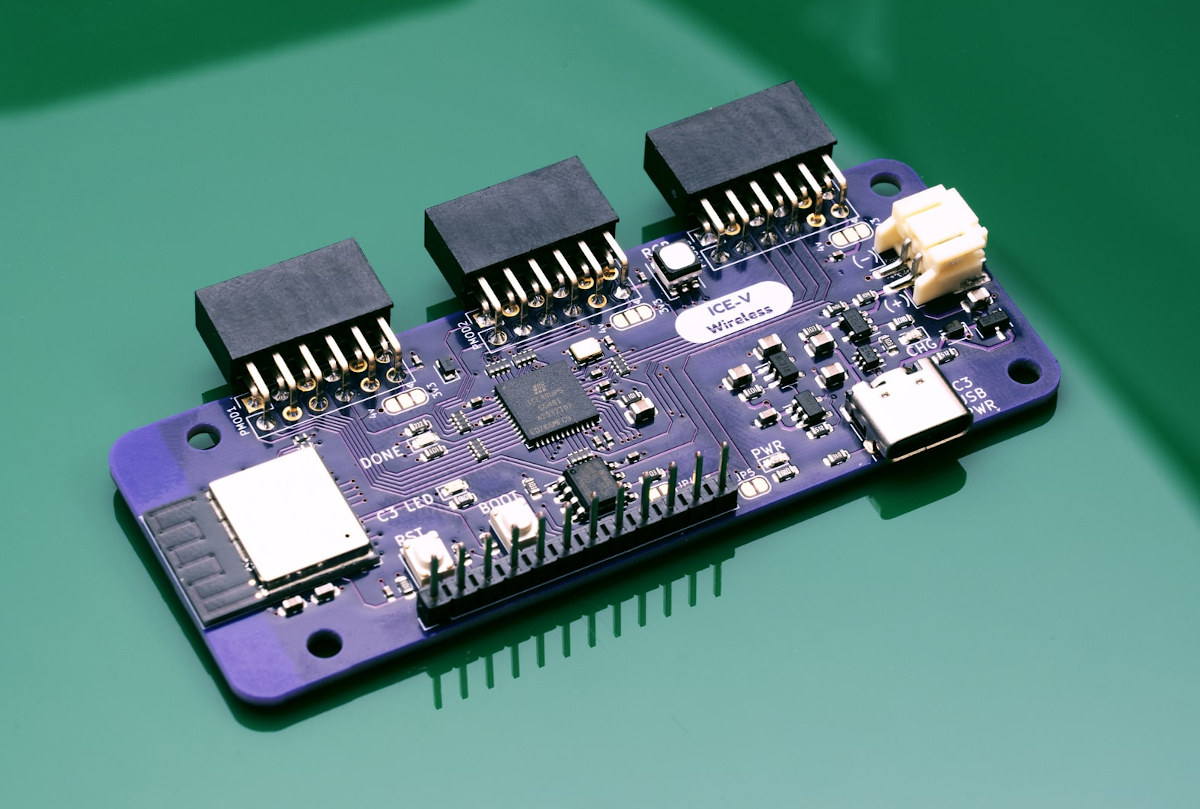The IcyBlue Feather V2 from Oak Development Technologies is a powerful and compact dev board that combines the Lattice Semi iCE5LP4K FPGA with the Adafruit Feather form factor. This unique combination allows this FPGA board to be compatible with the Adafruit FeatherWings ecosystem, providing functionalities such as additional GPIOs, displays, connectivity modules, and more. This new board features a USB-C port for powering and programming the FPGA. Additionally, it features two hardware I2C and SPI blocks that do not consume FPGA resources while operating. The board also includes 22 accessible GPIOs, a bright RGB LED for status indication, and two user-programmable LEDs. Previously, we have discussed many similar tiny FPGA-based development boards, such as the Lattice Semi MachXO2 FPGA, tinyVision.ai Pico-Ice board, Silicon Witchery S1, and ULX3S Education Board. Feel free to explore these if you are looking for similar options. IcyBlue Feather V2 Specification FPGA – Lattice Semi iCE40 […]
NRFICE is a Bluetooth FPGA board in the Arduino UNO form factor (Crowdfunding)
The NRFICE FPGA is a Bluetooth FPGA board designed for edge computing and IoT applications. It is built upon a combination of the dual-core nRF5340 Bluetooth SoC and the Lattice ICE40UP5K FPGA. The ICE40 UltraPlus is a low-power, high-performance FPGA for edge computing and artificial intelligence projects and the nRF5340 is a Bluetooth 5.3 SoC that supports Bluetooth Low Energy (BLE), Bluetooth Mesh, Thread, NFC, and Zigbee. Through the Nordic nRF5340, NRFICE can load a project directly into the iCE40 FPGA, bypassing the usual extensive toolchain setup. This enables a new class of FPGA development, where bitstreams can be hosted in the cloud, selected by a user on their phone, and loaded wirelessly to the board. It features a built-in J-Link OB for easy debugging and programming without the need for emulator dongles and is similar to the previously covered Segger emPower evaluation board in this regard. This board supports […]
Tillitis Tkey is an open-source RISC-V security key in a USB-C case
Tillitis’ TKey is a small, simple security key in a USB-C form factor, and described as a “new type of flexible USB security token” that is inspired by DICE (Device Identifier Composition Engine) and measured boot powered by a simple 32-bit RISC-V core, the PicoRV32, in a Lattice iCE40 UP5K FPGA. While we have covered hardware security modules in the past, this is the first security key we have seen that is based on an FPGA running a RISC-V core. The security token lacks persistent, onboard storage, unlike alternatives such as Yubikey Neo. Apps need to be loaded onto the key every time it is connected to a host device. It uses measured boot to generate a unique identifier for each application and is more secure than the alternatives since private keys are not stored on the device. Also, the hardware and software for the TKey are completely open-source for […]
M.2/mini PCIe card adds DVB-S2X/S2 tuner to desktop PCs and (some) SBC’s
TBS has designed two small DVB-S2X/S2/S tuner cards with the TBS7230 M.2 module and TBS7901 mini PCIe module designed to easily add DTB support to a desktop PC or even a single board computer with the right interfaces. Both models are based on a Lattice Semi LFE3-17EA-6FTN256C FPGA and Montage LZ M88RS6060 single-chip DVB-S2X/S2/S receiver with a tuner, a demodulator, and an LNB controller, but as I understand it, the mPCIe module relies on a USB PCIe (see comments section) interface, while the M.2 module features a PCIe interface and you can even install more than one in a PC through a PCIe card for NVMe drives. TBS7901 specifications: Host interface – Mini PCIe edge connector Tuner DVB-S2X/S2/S DVB-S2 QPSK – 1/2, 3/5, 2/3, 3/4, 4/5, 5/6, 8/9, 9/10 8PSK – 3/5, 2/3, 3/4, 5/6, 8/9, 9/10 16APSK – 2/3, 3/4, 4/5, 5/6, 8/9, 9/10 32APSK – 3/4, 4/5, 5/6, […]
Pico-Ice board combines Raspberry Pi RP2040 MCU with Lattice ICE40 UltraPlus 5K FPGA
tinyVision.ai Pico-Ice is a development board with a Raspberry Pi RP2040 MCU and a Lattice ICE40 UltraPlus 5K FPGA connected through an 8-bit bus. The Arm Cortex-M0+ microcontroller provides the clock for the FPGA and can program the FPGA directly or the dedicated FPGA flash using a drag-drop of a UF2 file. Just a few days ago we wrote about the LILYGO T-FPGA board that combines an ESP32-S3 wireless MCU with a Gowin FPGA connected through a 6-bit bus, and the Pico-Ice board provides a similar option with different chips and without wireless connectivity. Pico-Ice specifications: MCU – Raspberry Pi RP2040 dual-core Cortex-M0+ microcontroller @ 133 MHz with 264KB SRAM with all pins exposed FPGA – Lattice UltraPlus iCE40UP5K FPGA with 5.3K LUTs, 1Mbit SPRAM, 120Kbit DPRAM, 8x multipliers with all pins brought out Memory & storage chips MCU – 4MB QSPI flash FPGA – 4MB QSPI Flash, 8MB low […]
Lattice Avant mid-range FPGA platform features up to 500K logic cells, 25 Gbps SERDES, Hard PCIe Gen4
Lattice Avant is a new low-power and small form factor mid-range FPGA platform, manufactured with a 16nm FinFET process, and equipped with 25 Gb/s SERDES, hardened PCI Express, external memory PHY interfaces, a high DSP count, and a security engine. Lattice Semi is better known for its entry-level FPGAs such as the iCE40 which is popular in the community thanks to low-cost hardware and support for open-source tools, but the Avant platform marks the company’s entry into the mid-range FPGA market, defined by chips with 100k to 500k logic cells (LCs). Lattice Avant highlights: FPGA fabric – 200K to 500K logic cells up to 350 MHz DSP – 700 to 1,8000 18×18 multipliers @ up to 650 MHz to support the latest AI algorithms Memory 14-36 Mbit embedded memory up to 650 MHz DDR3L/DDR4/LPDDR4 and DDR5 support I/Os 4x to 28x 25 Gbps multi-protocol SERDES Hard PCIe Gen4 200 to […]
STEPFPGA FPGA board is programmable with a Web IDE (Crowdfunding)
STEPFPGA MXO2Core miniature FPGA development board is based on Lattice MXO2-4000 FPGA, and designed for education with an easy-to-use Web IDE, instead of the more traditional tools that can be frustrating to use, and detailed tutorials. The board also comes with a 2-digit segment display, some LEDs, push buttons, and a 4-way DIP switch, as well as two rows of twenty pins for I/O expansion, and a USB Type-C port used for power, programming, or mass storage. STEPFPGA MXO2Core specifications: FPGA – Lattice Semi MachXO2 X02-4000 FPGA with 4320 LUTs Display – 2-digit segment display USB – 1x USB Type-C port for power, programming (UART), and mass storage Expansion – 2x 20-pin headers with up to 36x GPIOs, SPI, I2C, 3.3V, VBUS, GND; breadboard-compatible Misc – 2x RGB LEDs, 8x red LEDs, 4-way DIP switch, 4x push buttons Power Supply – 5V via a USB port Dimensions – Small four-layer […]
ICE-V Wireless FPGA board combines Lattice Semi iCE40 UltraPlus with WiFi & BLE module
Lattice Semi ICE40 boards are pretty popular notably thanks to the availability of open-source tools. ICE-V Wireless is another ICE40 UltraPlus FPGA board that also adds wireless support through an ESP32-C3-MINI-1 module with WiFi 4 and Bluetooth LE connectivity. Designed by QWERTY Embedded Design, the board also comes with 8MB PSRAM, offers three PMOD expansion connectors, plus a header for GPIOs, and supports power from USB or a LiPo battery (charging circuit included). ICE-V Wireless specifications: FPGA – Lattice Semi ICE40UP5K-SG48 FPGA with 5280 LUTs, 120 Kbits EBR RAM, 1024 Kbits PSRAM External RAM – 8MB PSRAM Wireless – ESP32-C3-MINI-1 module with 2.4 GHz WiFi 4 and Bluetooth LE through ESP32-C3 RISC-V processor, 4MB flash. USB – 1x USB Type-C port for power, programming, and JTAG debugging of the ESP32-C3 module Expansions 3x PMOD connectors connected to the FPGA I/O connector with 7x ESP32-C3 GPIO lines (serial, ADC, I2C) and […]


